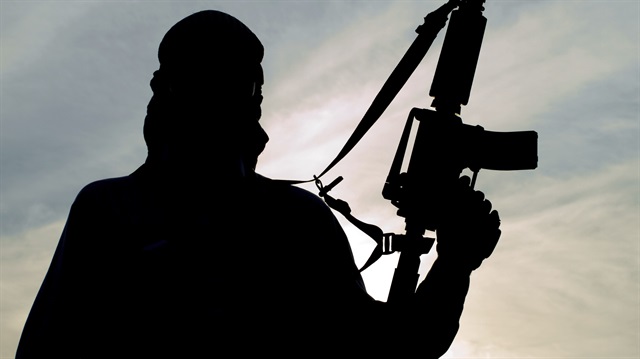Iran has at least 120,000 foreign terrorists fighting in alliance with the Bashar al-Assad regime in Syria since the civil war began in 2011. Some 22 groups surrounded Idlib from three directions, and are currently present in 232 points.
For a long time, the Assad regime has been conducting its military operations against the opponents in Syria not through its own army, but mainly through Iran-backed foreign forces.
These groups are stationed predominantly in Idlib, Damascus, Homs, the countryside of Deir-Ez Zor and particularly on the Lebanese border.
According to the information compiled by Anadolu Agency reporters from media outlets of Iran-backed foreign terrorist groups, Iranian media and opponents in Syria; the Tehran administration started sending militias to Syria in the first months of 2014.
Syrian opponents also fought with Iran-backed Hezbollah militias before. Hezbollah first gave support to the regime during its operations near the Lebanese border late 2012.
Six months later, the group announced its entity and support to the regime in al-Qusayr district of the countryside of Homs.
During this period, commanders of the Iranian Revolutionary Guards were regarded as “consultants” in conflict zones and military educations fields, while the soldiers of the guards were regarded as “fighters.”
Apart from being involved in the war physically, the Revolutionary Guards provided training and logistic support to militias fighting in Syria.
Iran’s involvement increase after opponents take Idlib
The involvement of the Iranian forces to the conflict field on the side of the Assad regime has intensified after the Syrian opponents took complete control of Idlib and came close to Latakia in early 2015.
Early 2015, Bashar al-Assad confessed that his army was in a difficult situation and the numbers of the soldiers decreased.
The Iranian army and intelligence, which wanted to keep the regime alive, had tens of thousands of terrorist fighters -- brought from Iraq, Lebanon, Afghanistan, and Pakistan -- enter Syria.
These forces actually took the active role in Madaya, al-Zabadani and Barada Valley -- where deaths occurred from starvation and tens of thousands of civilians were blockaded. The militias planted mines near residential areas, depriving civilians from humanitarian aid.
As the humanitarian tragedy was beyond endurance, locals and civilian opponents had to flee the region. Thus, the mandatory evacuation process started.
Most conflicts erupted in Aleppo
Iran-backed forces conducted their most intensive attacks on Aleppo, where they were settled since early 2014. The forces surrendered Aleppo to the regime following a 4 month-tragedy, where hundreds of thousands of people were living under siege.
The forces evacuated the entire Homs, Eastern Ghouta, Dara and Quneitra regions within 4 months, via the attack-blockade-deportation method.
Iran-backed foreign terrorist groups then headed towards Idlib. The groups piling up for the last three months blockaded Idlib from the east, west and the south.
Half of Iran-backed groups in Syria focused on Idlib
It is known that more than 120,000 Iran-backed groups exist in Syria. Nearly half of these forces are already stationed around Idlib.
22 Iran-backed foreign terrorist groups surrounding Idlib’s de-escalation zone from three directions are present in 232 different points.
12 groups stationed in the east of Idlib and western Aleppo are as follows:
Afghan-origin Fatemiyoun and Pakistan-origin Zainabiyoun brigades, Iraqi-origin al-Nujaba movement, Badr Forces, Imam Ali and Imam Hossein Brigades, Lebanese Hezbollah, Bakr Brigades, Iranian-origin Quds forces and Mahdi Army, Syrian Galibiyyun Brigades and Owner of Rights Units.
In Syria, there are other groups as well; such as Iranian-origin Basij Brigades, Liwa Zainebiyoun Brigades, Palestinian-origin Quds Brigades, Iranian Revolutionary Guards and its special forces.
According to the sources speaking to an Anadolu Agency correspondent in Idlib, these groups, which are deployed in Homs and Damascus will also come to Idlib in case of a possible military operation.
Iran lost senior figures during the operations conducted against the Syrian opponents.
According to the information compiled by Anadolu Agency from Iranian official and semi-official media outlets, at least 15 generals were killed since Feb. 2013.
Iran’s heaviest toll in Syria was Hossein Hamadani, an Iranian Revolutionary Guard commander, who was killed in Aleppo in 2015.
Syria has been locked in a vicious civil war since early 2011 when the Assad regime cracked down on protesters with unexpected ferocity.
Since then, hundreds of thousands of people are believed to have been killed and millions more displaced by the conflict.








